Speed cushions advantages vs. disadvantages
Speed cushions are mainly used to prevent overspeeding. They are extended across a city traffic lane from the centre line. They have longitudinal space between them, allowing long-axel vehicles, such as emergency vehicles, to avoid speed reductions.
Speed cushions allow water to move without hindrance towards the drainage. They also do not force cyclists, bus and ambulance drivers to change speed to help save lives.
Do you want to know more about this topic? We also have an article talking about the role of speed cushions.
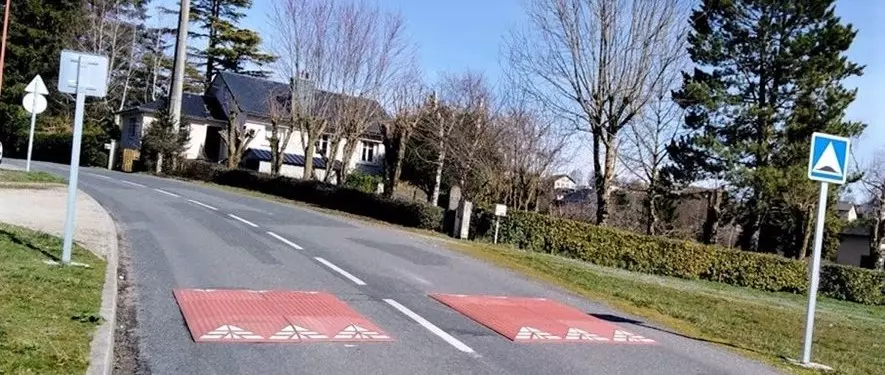
Do speed cushions make the roads safer?
Speed cushions are traffic control equipment installed on city streets and roads to make vehicles travel at a low speed. They are installed in areas where speeding vehicles can increase the rate of fatalities and harm pedestrians.
Speed cushions and other traffic calming measures are taken around roadways, pedestrian zones, crossing signs, construction signs, railroad crossings, parking signs, speed signs, pavement markings, traffic signs, parking lots, traffic signals, and signage.
They make roads safer for drivers and walkers by imposing vehicle speed limits. Because speed cushions have a raised surface, a passenger car passing over them has to reduce its speed by around 20 miles per hour (mph).
Otherwise, it may experience a sudden jerk that can damage the motor vehicle and the vehicular riders.
If there is a sudden increase in traffic volume in an area due to construction or some other reasons, municipalities, committees or transportation departments can install temporary speed cushions until traffic gets back to its initial volume.
Temporary speed cushions are made of recycled rubber and can be installed or removed from an area in less than an hour.
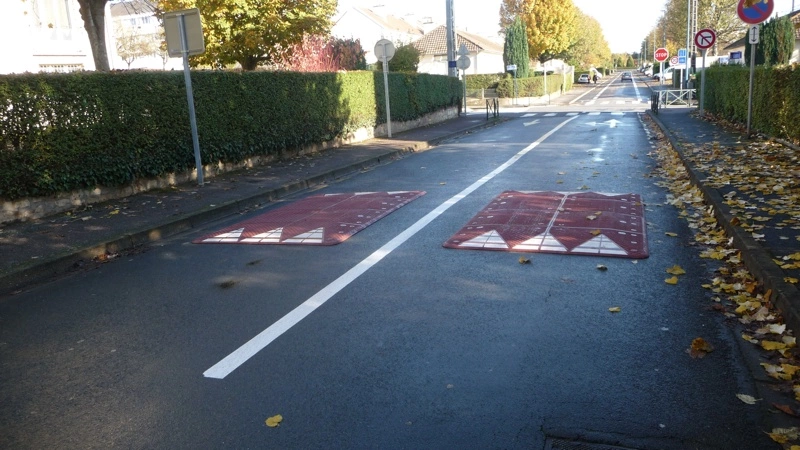
Are speed cushions dangerous?
Speed cushions are manufactured according to the standard traffic-engineering techniques by transportation engineers for traffic management. They are less damaging for vehicles than some other speed control devices, such as speed bumps that make vehicles reduce their speed greatly.
Their visibility is enhanced by making their surfaces reflective or by marking the surfaces with paint of bright colours such as yellow or white or reflective tapes.
Another good thing about these road traffic safety tools is that they have gaps between them. These empty spaces prevent the accumulation of rainwater and help in drainage.
In addition to this, emergency vehicles such as an ambulance, fire trucks, and transportation buses can pass through these gaps without diminishing their acceleration. It helps patients who need immediate attention reach hospitals without unwanted delays.
A motorist, cyclist, and bicyclist can also move through spaces between two-speed cushion pads without any discomfort. Speed cushions significantly decrease the chances of collision between cars.
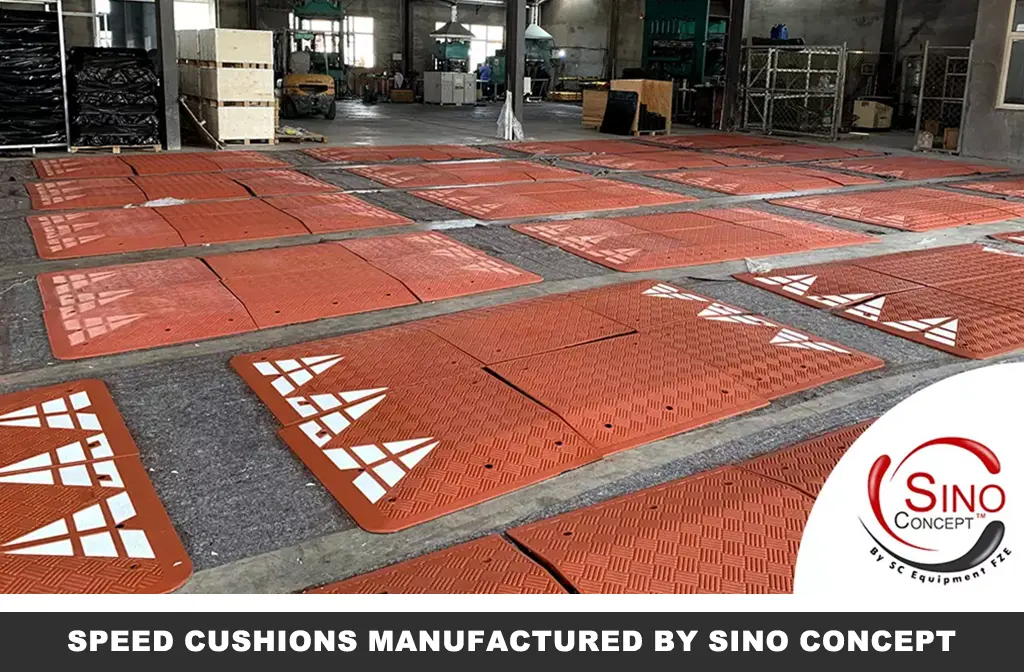
Do speed cushions damage cars?
Speed cushions, speed humps, speed bumps, speed tables, rumble strips, traffic cones, and traffic lights control traffic volume at a roundabout, cut-through, school zones, are used in public or residential areas to avoid damaging a car or causing the accident to pedestrians.
However, they can become damaging when cars rapidly move over them. According to the local ordinance, this is why it is best for the vehicle and the driver to slow down their vehicles.
If a vehicle passes over it frequently, the inner shoulders of its tires can wear sooner than usual. People should try to reduce their vehicle speed as low as possible so that their vehicle has the least impact.
Federal highway administration installs speed cushions in areas that really need them. Traffic data proves that traffic control devices help reduce fatalities and death rates due to road accidents.
They also use stop signs, variable message signs, and speed limit signs to ensure drivers learn about their presence before entering the sight distance.
Compared to asphalt speed cushions, rubber speed cushions have less impact on a school bus or other vehicles. Rubber is a softer material comparatively; as a result, vehicles also produce less traffic noise when they move over a rubber speed hump or a rubber cushion pad.
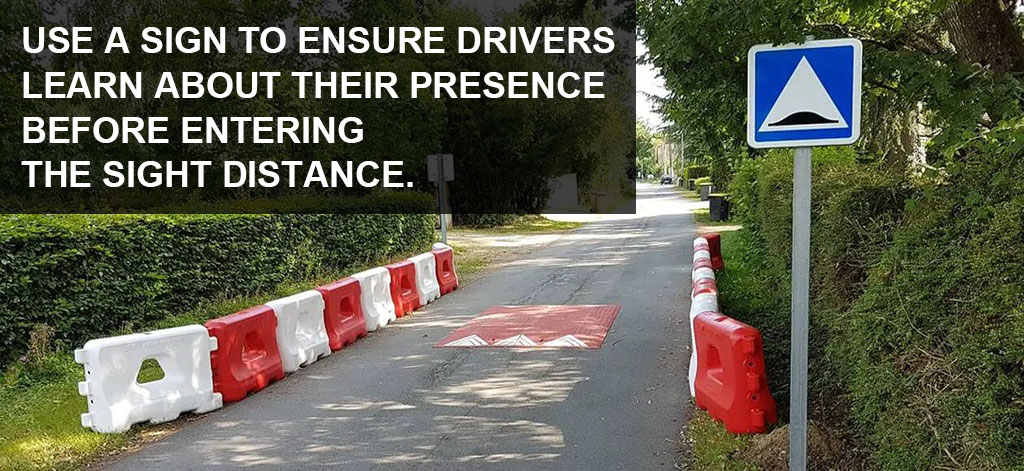
You have already read a good part of this article, 👀
We've
got the impression that you like it. 🙂
👇🏻
IF YOU ARE LOOKING TO WORK DIRECTLY WITH A MANUFACTURER,
FEEL FREE TO CONTACT US. WE ARE VERY HAPPY TO HELP!
Advantages of speed cushions
Speed cushions are a useful traffic speed-limiting tool. They have several pros. Some of them are explained below.
Reducing vehicular speed
When speed cushions are strategically installed in road lanes or before crossings, curbs, intersections, unmarked crosswalks, and no-parking areas, they prevent vehicles from exceeding the speed limit. It prevents hazardous incidents from happening.
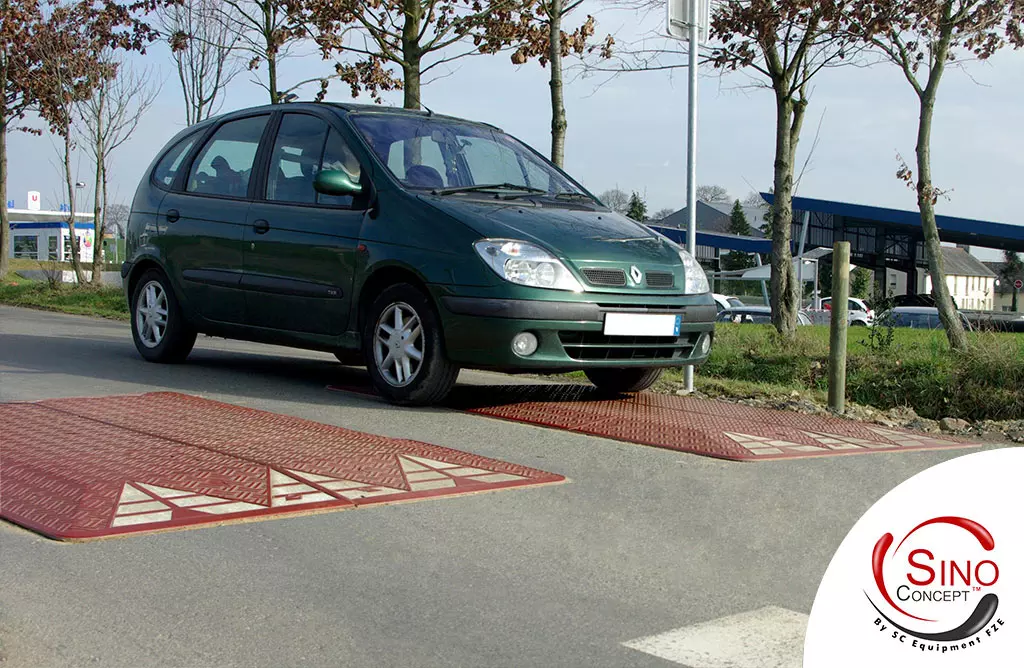
Lowering fatalities
Pedestrian safety is important to ensure people feel easy while moving over pavements, pavement crossings, crosswalks, sidewalks, or while crossing roads and streets. They are vulnerable to over-speeding.
When drivers move slowly, pedestrians get enough time to cross a road or see the vehicle before it gets too close.
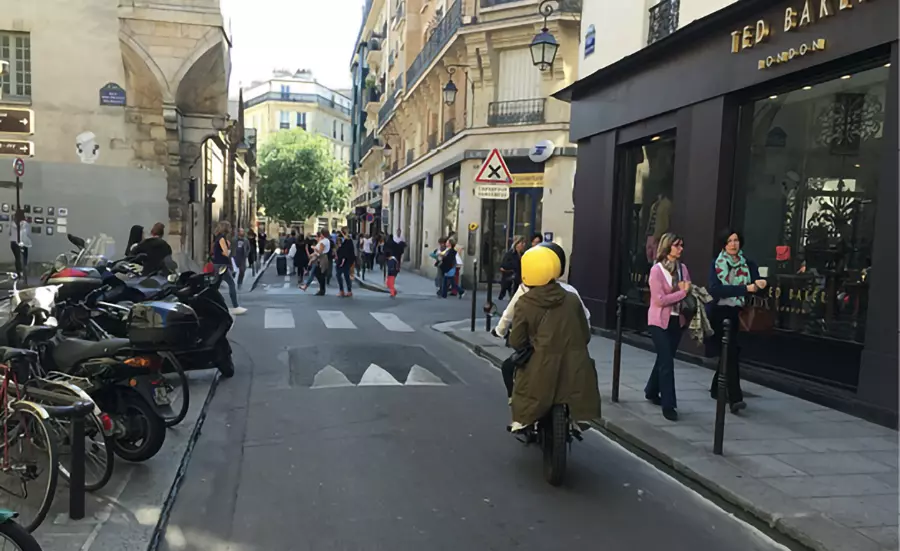
Regulating the route of traffic
A municipality can install speed cushions on roads with extensive traffic. When in a rush, drivers tend to move through paths that are free of speed-reducing tools.
So, when speed cushions are installed in high-traffic areas near schools and similar places, traffic and traffic noise can be reduced by directing vehicles to an alternate path.
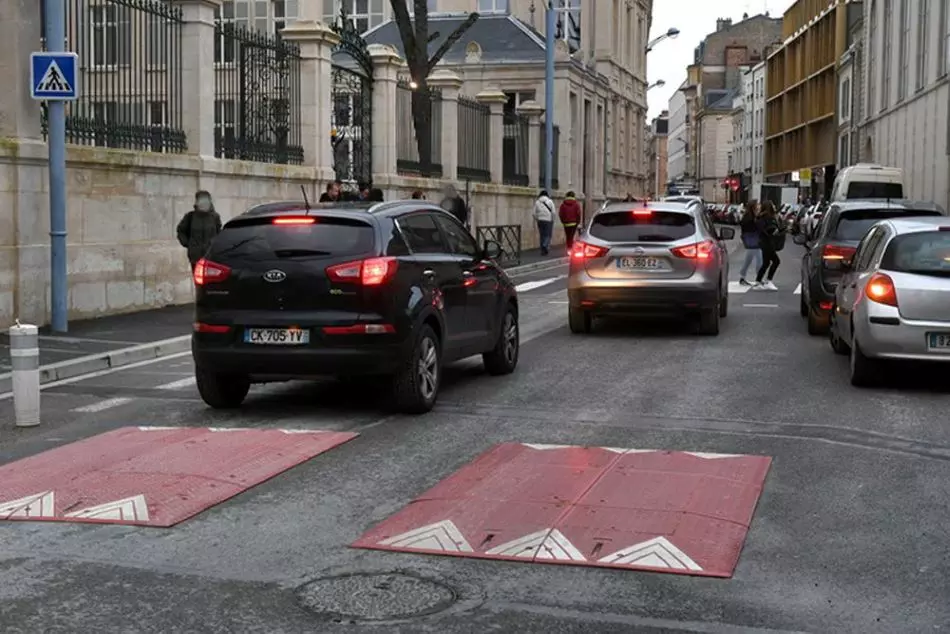
Allowing the emergency vehicle to pass without any hurdle
One of the benefits of speed cushions is that they do not force emergency vehicles and buses to limit their speed. It means they can move over them at their average speed.
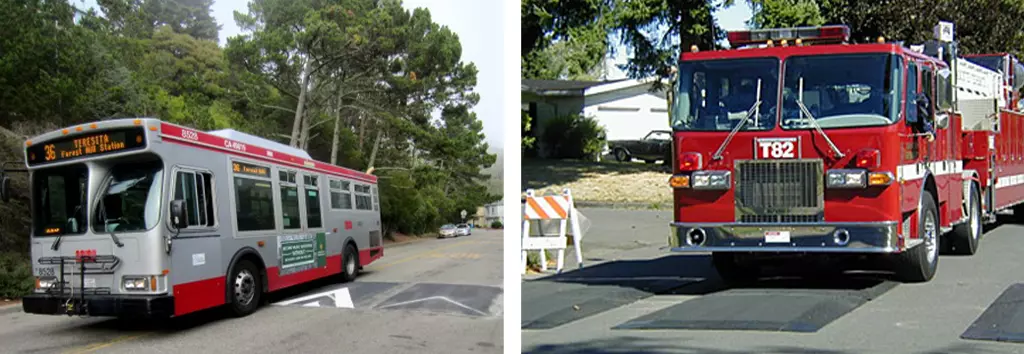
Making motorists and cyclists travel easily
Bicyclists and cyclists can move their vehicles between the gaps between speed cushion pads. This way, they can move around the road without any hindrance.
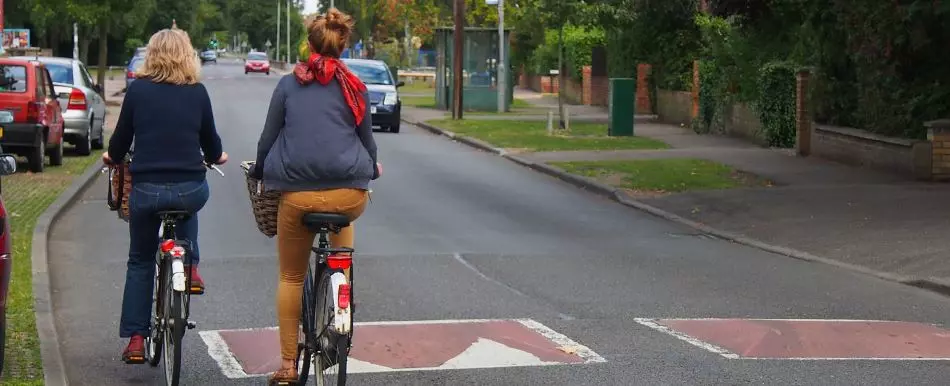
Not affecting drainage
Speed cushions are not spread over the entire width of the road. There is a particular distance between each cushion pad. Water can pass through these gaps and reach the drainage without any hindrance.
Disadvantages of speed cushions
Below are the cons of installing speed cushions.
- Speed cushions are not as abrupt as speed bumps. They do reduce speed, but not as much as speed bumps do.
- People tend to change their routes and travel through roads that do not have speed cushions. This can cause high traffic on such roads, further troubling residents.
- More noise is produced when cars move over them at high speed, which promotes noise pollution. It can be disturbing for people living in the neighbourhood.
Though speed cushions have many cons, their pros prevail over the cons.

Conclusion
Speed cushions are installations with wheel cutouts that allow long-axel vehicles such as buses and ambulances to pass them without trouble. However, they do make short-axel vehicles, such as passenger cars, to move at a low speed.
Speed cushions have both advantages and disadvantages. But their advantages outweigh the disadvantages. People find them on arterial streets and roads.
If the rate of accidents increases in your area, strategically installing speed cushions might be one of the best solutions for controlling these accidents and fatalities. You should request that your local municipality install speed cushions in your area.
👇🏻
IF YOU ARE LOOKING TO WORK DIRECTLY WITH A MANUFACTURER,
FEEL FREE TO CONTACT US. WE ARE VERY HAPPY TO HELP!





















